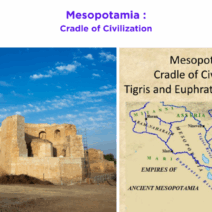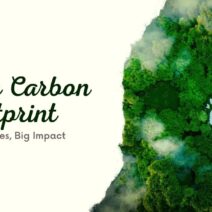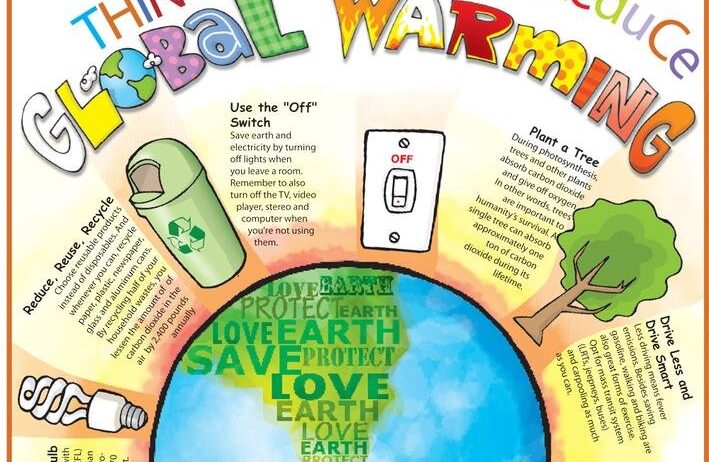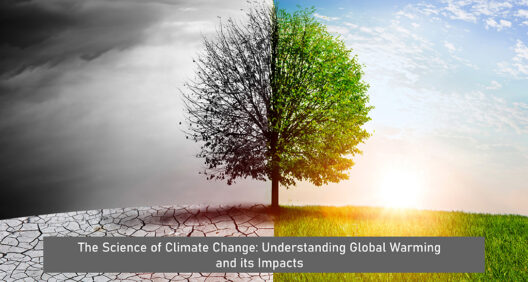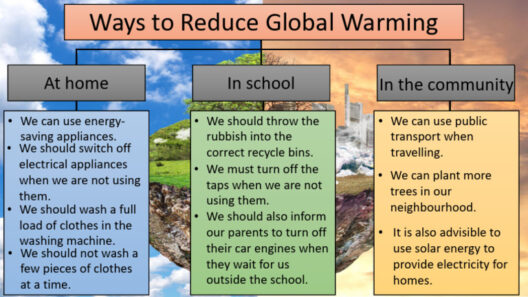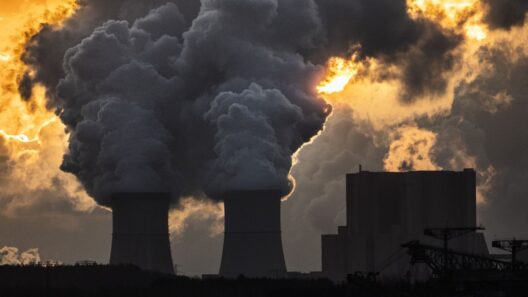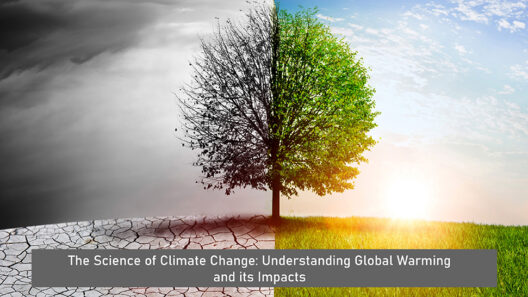Global warming, akin to a creeping glacier of indifference, steadily encroaches upon the fabric of our existence. It is imperative to galvanize awareness and inspire proactive engagement in the fight against climate change. The strategies that will be elucidated focus on innovative communication, educational outreach, and the establishment of community-driven initiatives. Each approach can be seen as a cog in a vast machinery, collectively powering a movement towards a more sustainable future.
To begin with, harnessing the power of storytelling stands as a cornerstone in raising awareness about global warming. Much like a deft weaver, individuals can intertwine personal narratives with environmental truths, cultivating a tapestry rich in emotion and urgency. When someone recounts a vivid experience—perhaps witnessing the devastating effects of drought in their community—it transforms abstract concepts into palpable realities. This emotional resonance can electrify conversations, prompting individuals to reconsider their own role in fostering environmental stewardship. A well-told story is not merely informative; it serves as a bridge, connecting people to the often opaque world of climate science.
Moreover, leveraging visual media can substantially amplify the impact of environmental messaging. In the age of digital consumption, infographics, videos, and imagery can communicate complex data with elegance and clarity. Consider the stark contrast of polar bears stranded on diminutive icebergs—this image not only communicates urgency but becomes a metaphor for loss. Social media platforms are fertile ground for such visual storytelling, enabling content to proliferate rapidly. The goal is not only to inform but to evoke a visceral response that compels audiences to disseminate these messages further, creating a ripple effect that extends beyond immediate circles.
Education serves as the bedrock of raising climate change awareness. Integrating environmental curriculum into educational institutions fosters a generation adept at understanding and addressing climate issues. This could be likened to planting seeds in fertile soil; with proper nurturing, the saplings of knowledge can grow into robust trees of change. Schools can implement hands-on learning experiences such as tree planting, conservation projects, and sustainability workshops. Such initiatives engage students in active learning while instilling a sense of responsibility towards their environment. Additionally, collaborative projects that involve parents and community members can further deepen the roots of environmental consciousness.
On a community level, grassroots campaigns can unite people from diverse backgrounds under the common banner of climate advocacy. Organizing local workshops, film screenings, or public forums provides platforms for dialogue and education. A community meeting can be likened to a potluck dinner, where each participant brings their unique dish—an idea or perspective that enriches the overall discourse. By fostering an inclusive atmosphere, individuals feel empowered to share their concerns and solutions regarding global warming, thereby democratizing the conversation around climate action.
Furthermore, partnerships with local businesses and organizations can amplify outreach efforts. When businesses align their practices with environmental goals, they not only benefit economically but also position themselves as champions of sustainability. This symbiosis can materialize in various forms, such as sponsoring clean-up days, providing resources for renewable energy initiatives, or creating green certification programs. By elevating visibility through corporate collaboration, messages of climate responsibility can penetrate wider audiences, cultivating a culture of sustainability.
Digital activism represents another potent tool in raising awareness. Online petitions, social media campaigns, and virtual events draw attention to pressing environmental issues on a global scale. With just a click, individuals can join movements that resonate with them, harnessing the collective power of many voices. The internet serves as a vast canvas; it provides the space for an entire climate symphony to be played, wherein each participant contributes a unique melody that highlights the urgent chorus of climate awareness. Engaging influencers and public figures to champion climate causes can further amplify these online efforts, offering an appealing face to critical issues.
Moreover, innovative practices such as gamification can engage and educate individuals about climate change in an entertaining manner. Utilizing apps and interactive platforms, users can participate in challenges centered around sustainable practices, earning rewards for their efforts. This approach merges education with enjoyment, thereby incentivizing behavioral changes in a manner that feels less like a burden and more like a game. Just as a video game rewards progress, these platforms can cumulatively foster a culture of environmental mindfulness.
Finally, creating a sense of urgency for immediate action is crucial. Just as a lighthouse casts its beam to guide ships safely to shore, effective communication must highlight the immediacy of the climate crisis. By emphasizing the ramifications of inaction, proponents can inspire individuals to view climate change not merely as a distant threat, but as an imminent challenge demanding collective response. Using data and case studies that showcase the tangible impacts of global warming can reinforce the message that time is of the essence—each moment without action is another tick on the clock of environmental degradation.
In conclusion, raising awareness of global warming requires an amalgamation of storytelling, visual media, education, community initiatives, partnerships, digital activism, gamification, and a profound sense of urgency. Each strategy represents a strand in the intricate fabric of climate consciousness. By implementing these diverse approaches, individuals and organizations alike can foster an informed populace ready to confront the existential challenge of climate change. Just as the interconnected ecosystem of our planet relies on balance and harmony, so too must our efforts to raise awareness reflect a multifaceted and collaborative spirit.
